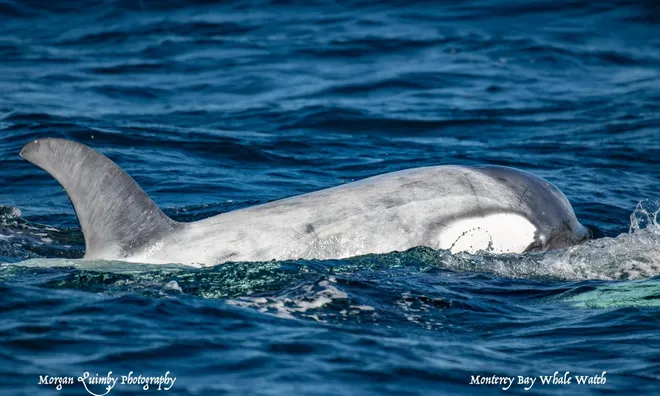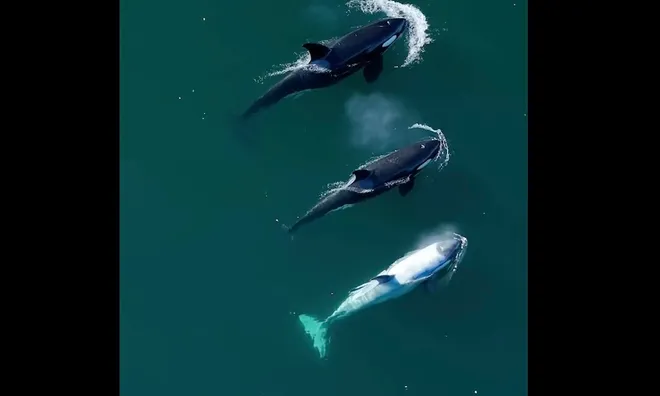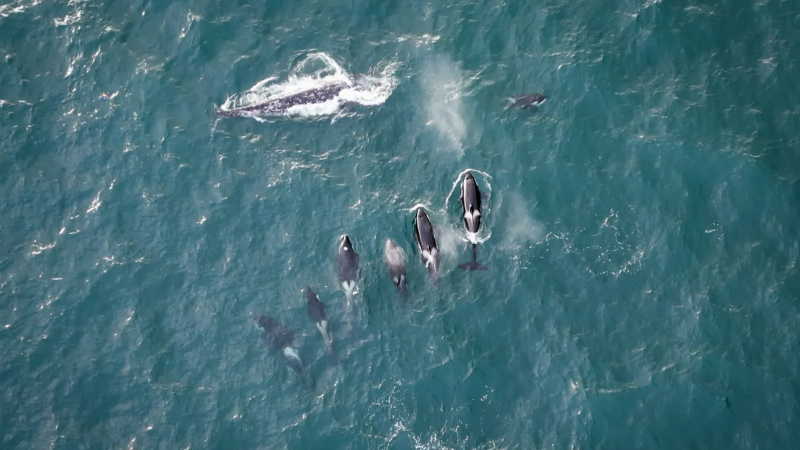Watch: Frosty the white orca seen hunting with pod off California in 'incredible encounter'
Whale watchers off the coast of California were treated to an incredible sight last weekend when a "super rare" white orca made an appearance near their boat.
Boaters on a trip out of Monterey Bay, California, spotted the killer whale on Sunday, noting its unusual white coloring. While orcas are usually recognized by their signature black-and-white coloring, this specific whale is believed to have an atypical condition causing its pale appearance.
Identified as whale CA216C1 by the California Killer Whale Project, the white orca is also known by its nickname Frosty and is about 4 years old. It's unclear whether Frosty is male or female.
“We had Frosty the super rare white Killer Whale!” Monterey Bay Whale Watch, which captured drone footage of the orca and its family during an hours-long encounter, wrote in a Facebook post.
Glimpse into orca lives:Killer whales rule the seas, but their clock ticks just like ours. How long do orcas live?
'Incredible encounter' with Frosty the whale

Evan Brodsky of Monterey Bay Whale Watch on Monday shared remarkable footage of Frosty swimming in formation with a pod of other orcas, which California Killer Whale Project identified as group CA140Bs, also known as Louise's group.
"We still can’t stop thinking yesterday's incredible encounter with a rare White Killer Whale named Frosty," read the post, which had thousands of views.
"I have watched this several times. So amazing," one user wrote. Another said: "That was a SIGHT for sure!"
Frosty was also accompanied by his or her mother (CA216C), and the two have been spotted before swimming with the same group in the bay.
White snake:A 13-foot, cat-eating albino python is terrorizing an Oklahoma City community
Strange giraffe encounter:Watch: Giraffe stumbles, crashes onto car windshield at Texas wildlife center
Why is Frosty the whale white?

Frosty is believed to be white thanks to either leucism or Chediak-Higashi Syndrome, according to Monterey Bay Whale Watch. Leucism occurs when an underlying cause or condition leads to an animal to losing pigmentation in its skin, hair, feathers, scales or cuticles, resulting in white or pale patches and discoloration.
Chediak-Higashi Syndrome, on the other hand, is a rare recessive disorder arising from a gene mutation, which also impacts melanin production. Symptoms include albinism, recurring infections and nerve damage and the condition is known to affect humans, mink, cattle, mice, killer whales, cats, and blue and silver foxes.
It appears Frosty's fellow orcas are unperturbed by the different coloring, as the juvenile was sighted traveling and hunting alongside the pod as any average, health young orca would.
According to the post shared by Monterey Bay Whale Watch, the group had a successful trip, hunting an elephant seal and a California sea lion, and engaging in prey sharing, an act in which whales of the same kin or pod share killed prey, allowing even the very young and very old or injured to sustain life even when unable to hunt for themselves.

Disclaimer: The copyright of this article belongs to the original author. Reposting this article is solely for the purpose of information dissemination and does not constitute any investment advice. If there is any infringement, please contact us immediately. We will make corrections or deletions as necessary. Thank you.







